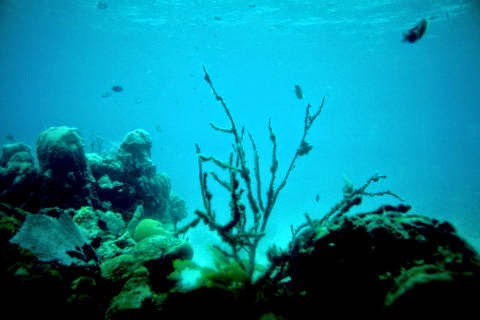Rapid Reef Growth? We Don't Mind Atoll
One of the criticisms of the biblical timeline is the growth rate of coral reefs and atolls. Using uniformitarian assumptions which include that growth rates today are the same as growth rates in the past, calculations supposedly prove that the Bible is wrong. However, as we have seen numerous times, "the present is the key to the past" plus other assumptions backfire.
 |
| Coral Reef, Virgin Islands — USFWS / Gary M. Stolz / PD |
Reefs grow more slowly than coral. Reefs have varying growth rates, and can be very rapid. Complicating factors are found in the Eniwetok Reef in the Marshall Islands. This thick reef is not entirely reef, because about a mile of it is limestone resting on an underwater volcano.
But still, questions arise as to how the entire package can appear the way it does in relation to Flood models. Creation scientists have proposed models based on theories and observations that offer a very plausible explanation.
You can read the rest of the article at "Massive Modern Reefs—Finding Time to Grow".
Modern ocean reefs can be quite massive, sometimes thousands of feet thick. How is it possible to get such thick reefs, if they had only a few thousand years to grow, after the Flood?
The term reef conjures up images of an underwater wonderland—a beautiful and colorful spectacle of living animals such as corals, sponges, fish, and other exotic sea creatures, where snorkelers and divers love to congregate. Unseen beneath the corals is a massive limestone framework, built up slowly, inch by inch, as organisms die and leave behind their hard skeletons. How was it possible for these coral reefs—sometimes thousands of feet thick—to grow in the short time since Noah’s Flood about 4,400 years ago?
The most famous of all living reefs is Australia’s Great Barrier Reef, actually a series of 3,000 smaller reefs that stretch some 1,600 miles (2,600 km) along the continent’s northeastern coast. At its thickest, the reef is over 400 feet (120 m) thick. But this is nothing compared to one of the world’s thickest “reefs”—the Eniwetok (Enewetak) Atoll, located in the Pacific’s Marshall Islands. Drilling operations in the 1950s revealed nearly a mile (4,050 feet, or 1,230 m) of limestone material resting on an underwater volcano. Has there been enough time for such thick accumulations to form since the Flood?